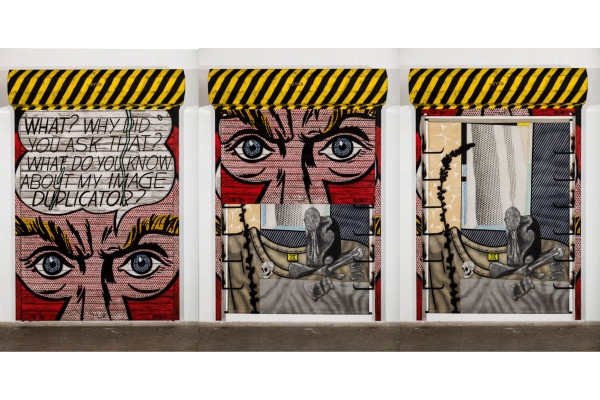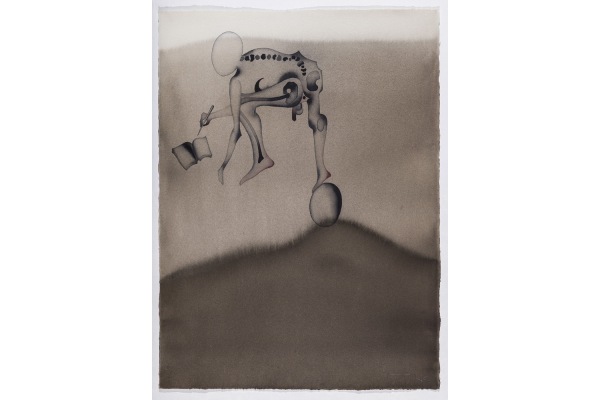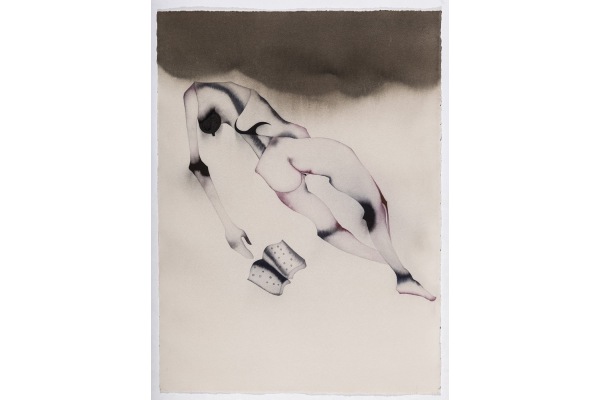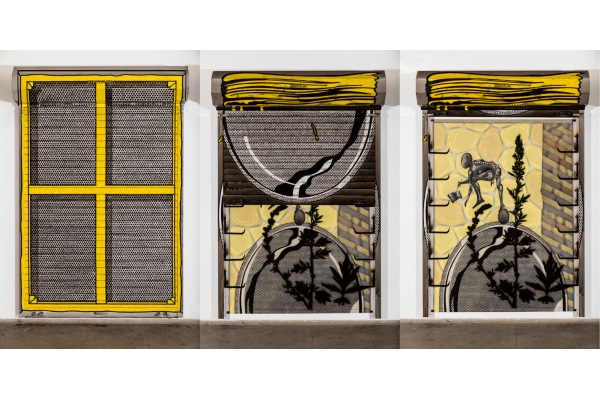Reviews & Articles
Atul Dodiya: Duplicator’s Dilemma
John BATTEN
at 7:15pm on 14th January 2014




Captions:
1. Atul Dodiya, Eyes, 3 settings: closed; half-open; open, 2013. Exterior: enamel paint and brass lettering on motorised galvanised roller shutter with iron hooks. Interior: Oil, acrylic with marble dust and oil stick on canvas. Exterior: 274x183cm and interior: 222x159cm.
2. Atul Dodiya, Scribe on the Hill, watercolour on paper, 2013, 76.2x55.88cm.
3. Atul Dodiya, Reader , watercolour on paper, 2013, 76.2x55.88cm.
4. Atul Dodiya, Mirror; Stretcher; Eyes, 3 separate works (at half-open setting), 2013. Exterior: enamel paint and brass lettering on motorised galvanised roller shutter with iron hooks. Interior: Oil, acrylic with marble dust and oil stick on canvas. Exterior: 274x183cm and interior: 222x159cm.
All photos: Courtesy of the artist and 10 Chancery Lane Gallery
(原文以英文發表,評論「Atul Dodiya - Duplicator's Dilemma」展。)
Hong Kong’s interest in collectible Indian modernist ‘masters’ - such as M.F. Husain, Akbar Padamsee and Jogen Chowdhury – has overshadowed the exhibition of contemporary Indian art in the city. However, this could be changing. Hanart TZ Gallery’s Johnson Chang Tsang-zung’s personal West Heavens exhibition and research project aims to resurrect and continue the fervent dissemination of ideas and links that India and China enjoyed over the previous two millennia.
Likewise, Atul Dodiya’s exhibition at 10 Chancery Lane Gallery introduces one of India’s prominent contemporary artists to Hong Kong audiences. Dodiya was born in 1959 and has been widely exhibited around the world. Dodiya’s Duplicator’s Dilemma features three of his signature roller-shutter door paintings, complemented by a series of smaller paintings, delicate black-and-white watercolour on paper figures in camera-caught motion.
Layers of duplication, copying and appropriation are explored as Dodiya exactly copies Roy Lichtenstein’s 1963 painting Image Duplicator onto the door of a roller-shutter. Lichtenstein himself freely used ideas from other’s work. He takes, and redacted, a text from an unidentified comic magazine, which Dodiya reuses: “What! Why did you say that! What do you know about my image duplicator?” And for the headshot of the young man speaking, Lichtenstein/Dodiya uses the artwork of X-Men comic artists Jack Kirby and Paul Reinman. The iconic Lichtenstein, widely imitated as it is here, Pop-comic genre is born, then re-formed by Dodiya.
Dodiya breaks the duplication – reminiscent of the endless reflection seen in two closely held mirrors at right angles - when a roller-door is lifted. Underneath, painted on canvas, the Lichtenstein Pop aesthetic continues, but the shape of a scribe - a Dodiya motif - a person who copies and writes as a profession, is revealed.
In its modern Indian usage, a “scribe” could also be a journalist. Dodiya plays with visual truth in his roller-shutter paintings. But, do these scribes - the ethical journalist, the literati, the educated, intellectuals - know truth? Do they uphold truth? Dodiya asks them, “What do you know about my image?”
Exhibition:
'Atul Dodiya: Duplicator’s Dilemma' @ 10 Chancery Lane Gallery
A version of this review was published in the South China Morning Post on 13 January 2014.
